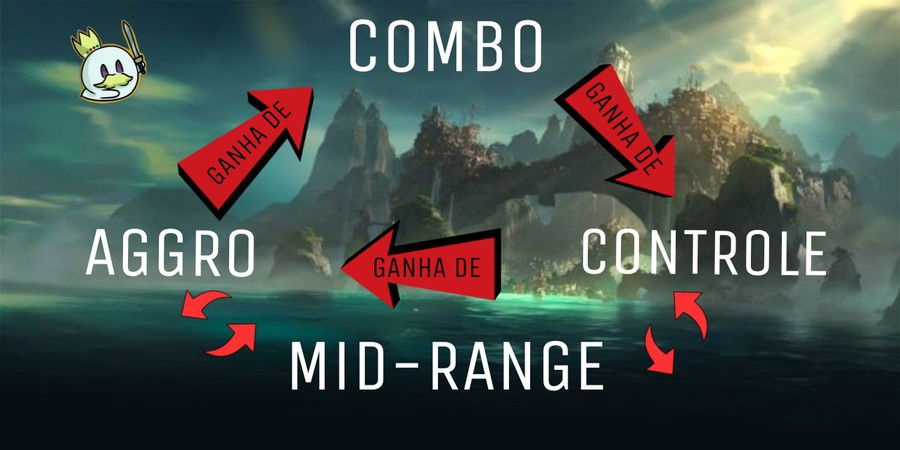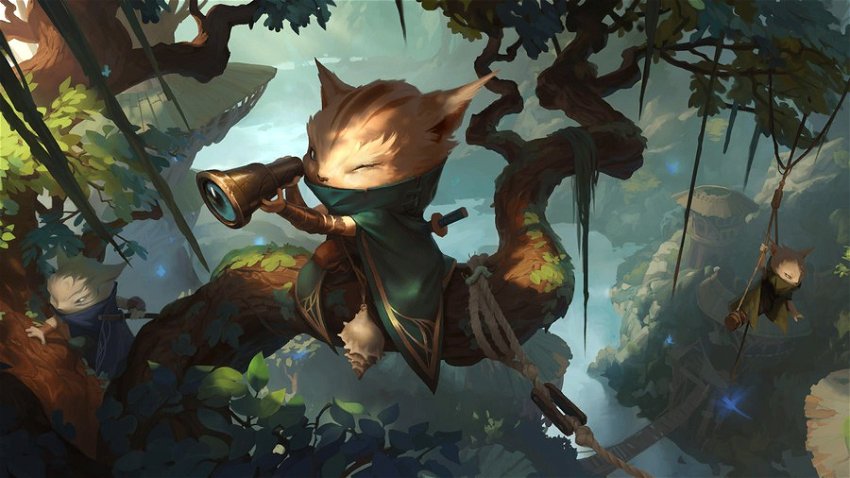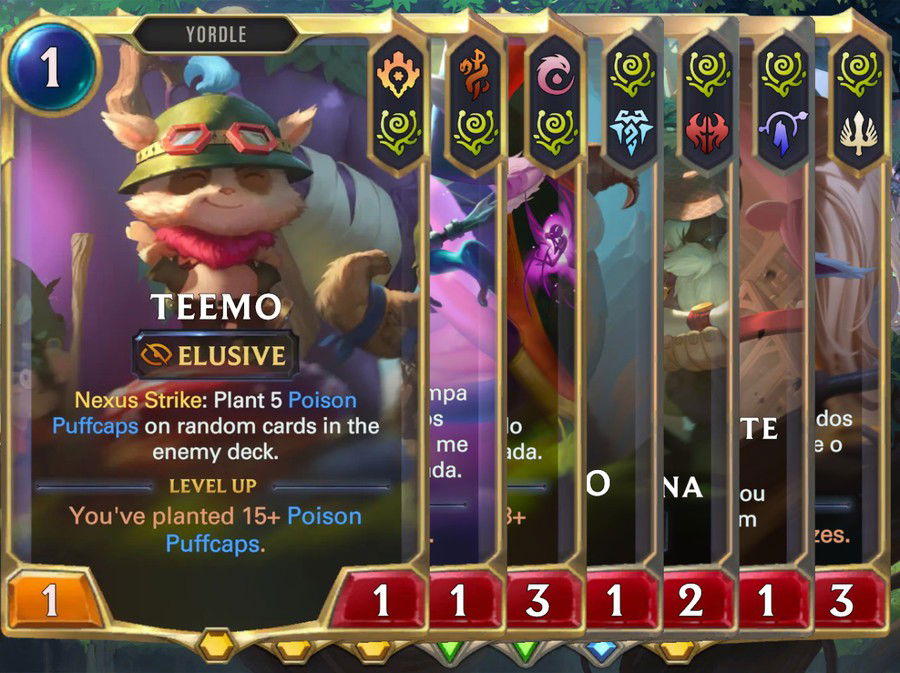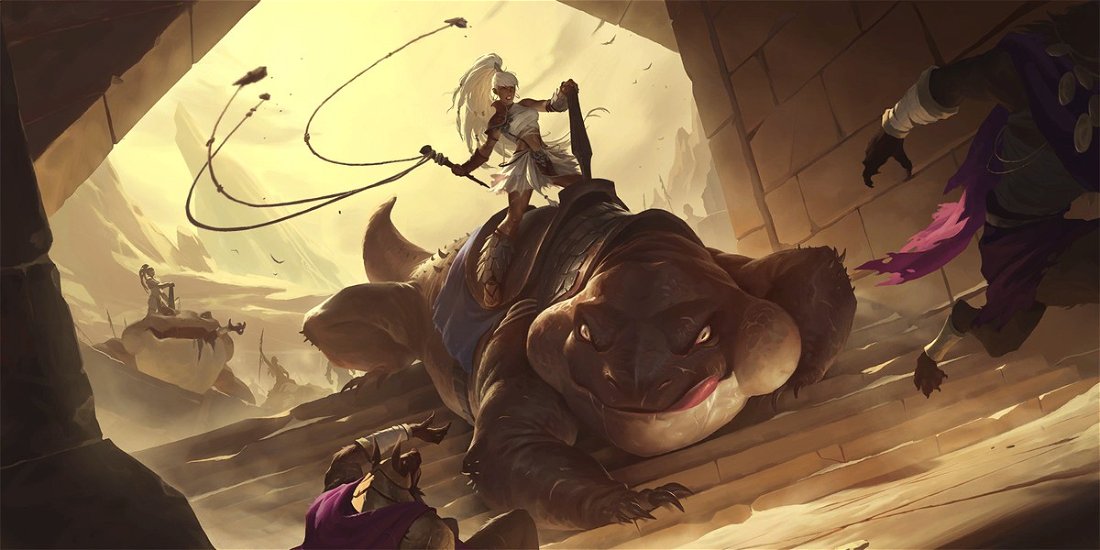Hi! You started playing Legends of Runeterra recently, it's your first Card Game and that's why you get lost when they talk about “archetypes”, like “aggro”, “midrange” and stuff? So, you've come to the right place.
Here I will explain the archetypes and modes of play in a simple way for first-time players!
Introduction
First, it is worth explaining what an “archetype” is in the context of Card games. As the word itself says, it is a “type of deck”, and each deck type requires a certain way to save and use resources to take you to victory. Here I will expose the four archetypes that exist in LoR: Aggro, Midrange, Control and Combo. And we'll also talk about which matchups are better or worse for each of them.
I will also briefly explain two terms and philosophies about the game and archetypes, known in other card games as “tempo” and “value”. These ways of thinking will be reflected in mana stored or used and the resources on the hand and board.
But at first, let's understand what each archetype does:
Archetypes
Aggro
This archetype defines an aggressive deck. It takes many units and cheap spells to finish the game as quickly as possible, before the opponent has time to develop their game, so it doesn't care often about saving its mana for future turns.
It is common to use life (Nexus) as a resource, that is, when playing aggro you will rarely defend just to keep yourself with more health, the exchanges will only be made if they are favorable and guarantee a better attack. Furthermore, it doesn't have many defensive spells either, and most of the spells are aimed at the enemy Nexus. A phrase that sums up this archetype well is “the best defense is the offense”.
One consequence of this deck is that because it's cheap, in general, its development has to be fast, and the longer the game, the smaller chance an aggro deck will have to win.
The most common combination of regions in aggro is Noxus and Piltover/Zaun.
Control
Control decks aim to control the board and the game as much as possible, that is, using resources to delay the opponent's deck, to establish an advantage.
It tends to have many spells that deal damage in the area to be able to clean the enemy board efficiently, and sometimes healing resources, in order to stay alive until it reaches the late-game. Thus maintaining the necessary control, dictating how many units are left on the board and how much damage the opponent will deal.
This archetype usually has a well-defined win-condition, and since such conditions have a high mana cost, the goal is to stay alive until that condition can be put on the board.
The region that has the most resources to create a control deck is Freljord.
Midrange
This archetype is very flexible and seeks the greatest resource efficiency to make the most advantageous exchanges possible, be it with spells or units. It usually has responsive spells, and because of that, there must be a more "strict" mana management to get the advantage.
This deck is a “middle ground” between aggro and control, normally when playing against aggro it will take a more controlling stance, and when placed against control it tends to take a more aggressive stance.
The region that is most commonly used in this archetype is Demacia.
Combo
As the name says, this deck intends to make a combo (combination of cards) to take you to victory. Usually have games of "medium duration" to be able to have all the necessary resources to make the desired sequence of cards.
It is often a very “closed” deck between itself, not allowing for many variations of the combos that really lead you to victory. So, there must be a great management of resources to make sure you won't waste cards that in other situations would lead you to victory in vain.
The regions that have the most resources to combo are Ionia and Shurima.
Rock-Paper-Scissors

Keep in mind that this table is not a rule that ALWAYS works. It all varies with each game, based on how your hand and the opponent's came, as well as the decisions made during the game. But it's an example of what usually happens
Control vs. Aggro
As said before, because of control aiming to delay the game as much as possible to win, it has damage spells that are very effective on units with low health.
And as Aggro wants cheap units, consequently such units have little health, and as it does not have many defensive responses, it's vulnerable to such damage spells. With this, the control deck has a great ease in ending the board advantage that aggro would have.
And since control usually has healing spells and units, it also slows the game down considerably, ignoring the damage the opponent has already dealt, making it increasingly difficult to win by aggressive means.
Aggro vs. Combo
The aggro deck needs to win quickly, while the combo needs the game to last until you have all the cards you need to win, but on the other hand it doesn't have many tricks to delay the game.
Remember that each deck has only 40 cards, and each card you would put to delay the opponent's game, you would be taking out of your possible combo, therefore even if the deck has a certain control it is usually not enough to stop the aggression.
As it is common to have a more "closed" combo, it is not possible to spend many resources unfavorably in order not to lose your win condition, but aggro decks force many unfavorable exchanges to the opponent, seeking to deal as much damage as possible.
That's why combo decks are at a disadvantage against aggro.
Combo vs. Control
Combo decks, having the desired cards in hand, tend to win quickly, either in the same turns or in a matter of 2-3 turns from there.
Control decks, on the other hand, usually don't have many options to defend against combo decks, other than nexus recovery. That's why it's not even possible to respond to the combo, as it may happen to have some healing spell, but in that same turn the combo might deal more than 20 damage, not allowing the control deck to heal in time or in the necessary amount.
This type of deck also doesn't have as many low health units as in aggro, so the board control features are not as effective in these cases, thus taking away the advantage that the control archetype could bring.
Midrange
It is possible to see in the image that this archetype does not have a single fixed posture when facing opponents. As stated earlier, it is extremely flexible, having the means to take a controlling or aggressive stance when necessary.
But by having a greater variety of resources in a single deck, the games also depend on the cards that you draw in that game. It's possible that when you play against an aggro deck, you don't have the cards you need to take a controlling stance or vice versa. Consequently, this archetype will rarely have an extremely disadvantageous or advantageous matchup, depending a lot on the starting hand and how it uses its resources.
Tempo & Value
The terms “tempo” and “value” come from other card games, but they can be applied as philosophies about the game when thinking about LoR.
Tempo
The term “tempo” refers to using as little mana as possible to develop as much as possible. It usually puts tempo in your favor, as it will pressure your opponent to play a fast game, forcing him to spend resources in an unprofitable way to stay alive.
However, it's not just spending mana recklessly. This philosophy is usually reflected in aggro, where mana is rarely left, but all developments made there are advantageous to the archetype.
Value
This term does not refer to the mana value of the units, but to the value of your hand in relation to the opponent's hand. It's based on how many cards you have in your hand and how advantageous they can be to answering the game; you will always try to have more answers at your disposal, consequently, you will spend fewer cards to deal with multiple threats, delaying the game as much as possible to establish some advantage.
It's a way of thinking often used in a control vs. aggro match, for example, as it's extremely advantageous for your opponent's resources to run out before yours, to establish your victory.
Conclusion
These are the archetypes and their proper philosophies, but it is worth noting that such ways and archetypes should not always be followed literally during games. You must evaluate your opponent's hand, board and deck to make the most effective plays. Assess your archetype and the enemy's well and make the best choices as possible, which isn't always necessarily what the deck is meant to do.
Remember that Legends of Runeterra is a game with odds and has many cards, there will not always be a single path to take, let alone a single formula to take you to victory. Get to know the game to improve and, above it all, have fun!
Any questions, just send them in the comments!














— Comments 0
, Reactions 1
Be the first to comment